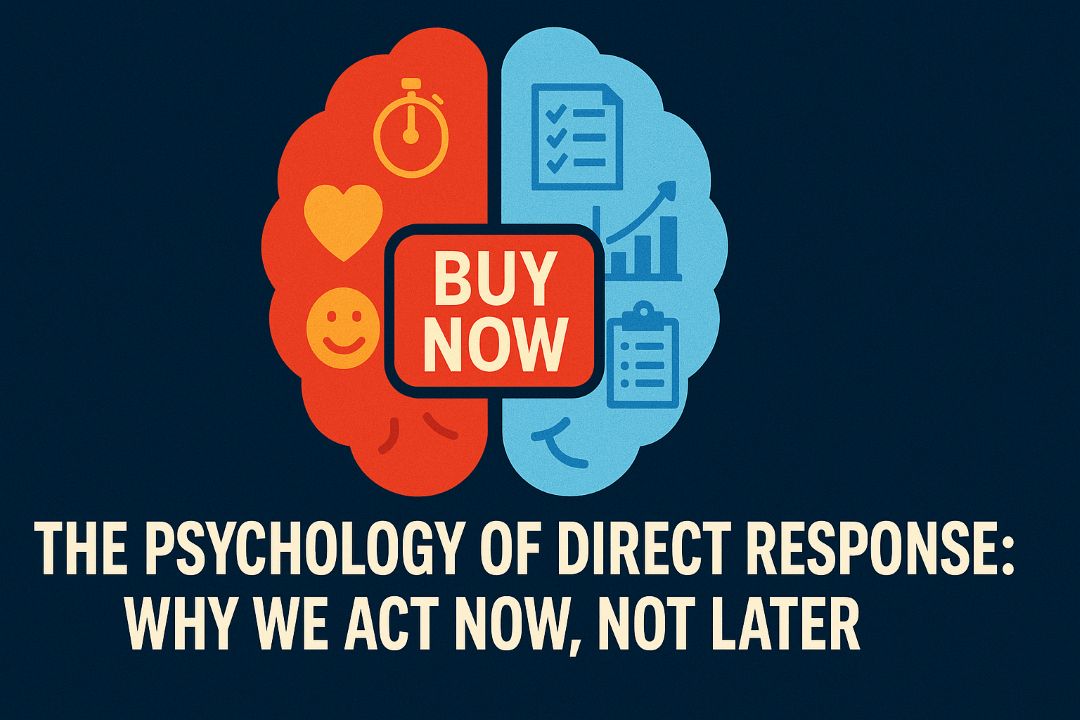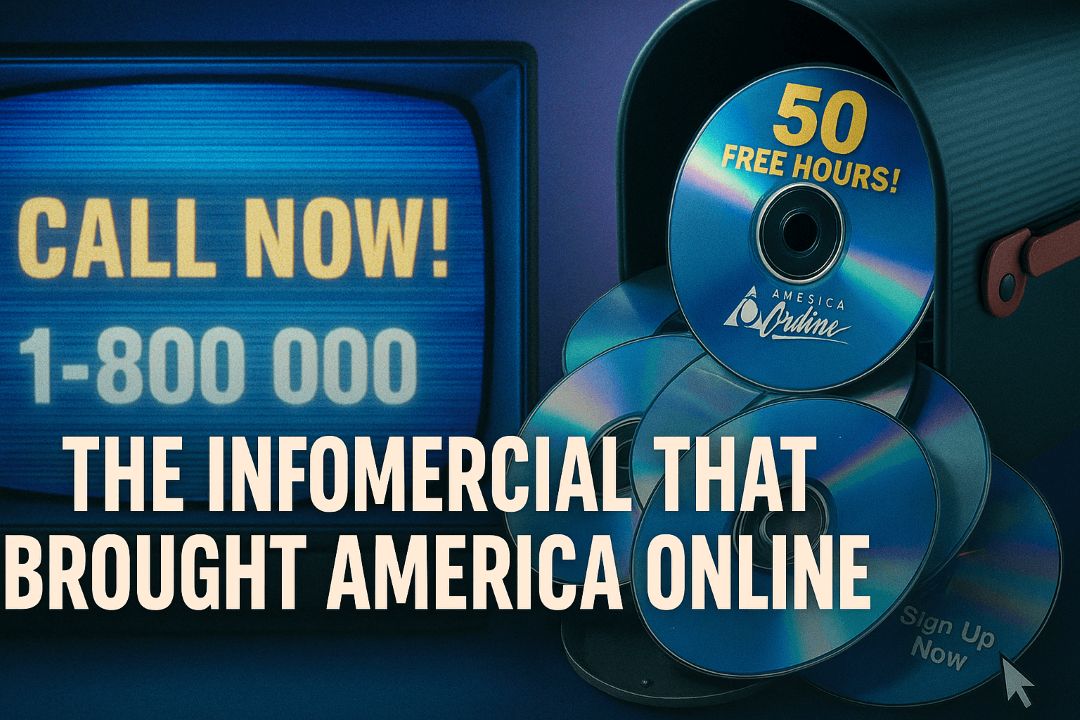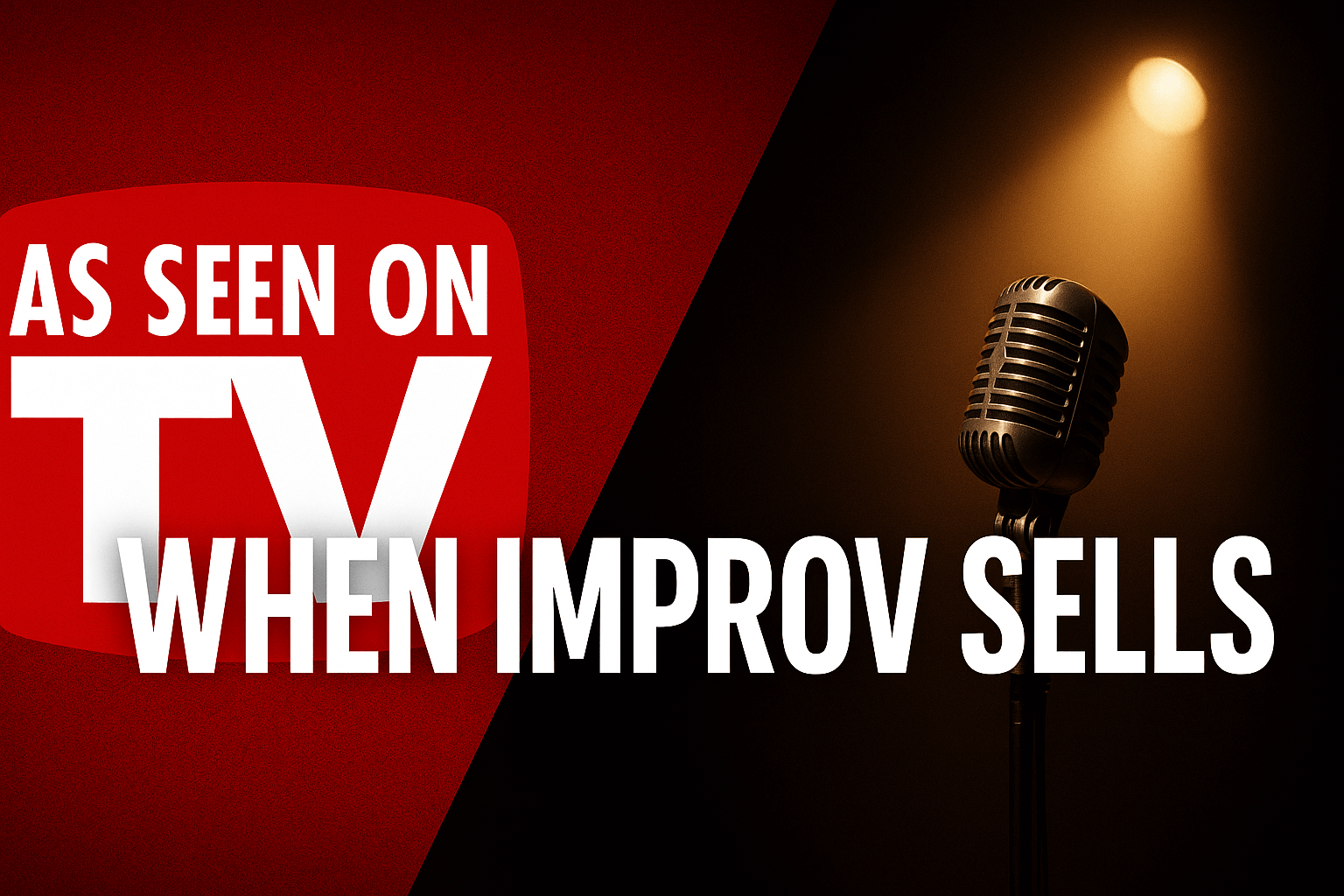The Psychology of Direct Response Copywriting: Why We Can’t Resist the Call to Act
If you’ve ever picked up the phone after hearing “call now,” or clicked “buy now” because the timer was running out, you’ve felt the pull of direct response copywriting. It isn’t an accident. Unlike brand advertising that plants seeds for the long game, direct response is about sparking an immediate action. And it works because it leans on human psychology—the triggers hardwired into how we make decisions.
Urgency and Scarcity: The Fear of Missing Out
Nothing drives action like the idea you might miss out. “Only 200 left.” “This offer expires in 10 minutes.” Infomercials perfected this art. Why? Because of loss aversion. People are twice as motivated to avoid losing something as they are to gain it. In other words, the risk of missing out moves us faster than the promise of something better.
Social Proof: Everyone Else Is Doing It
When we’re unsure, we look around. Testimonials, before-and-after photos, case studies—they all tell us, “People like me tried this, and it worked.” That’s social proof in action. It’s one of the strongest forces in persuasion. And it’s why even the most skeptical shopper leans in when they hear, “I used it, and it changed my life.”
Authority and Credibility: Trust the Expert
Why does a dentist sell toothpaste on TV? Because authority carries weight. We’re wired to trust experts. A white coat, a celebrity endorsement, a chart full of stats—it all signals credibility. The same principle applies across industries, from financial services to fitness gadgets. If someone we perceive as knowledgeable tells us to take action, we’re far more likely to do it.
Emotional Resonance: We Buy With Feelings
Logic justifies, but emotion buys. Copy that connects with a desire, fear, or hope almost always outperforms straight facts. Fitness commercials don’t just sell exercise machines—they sell confidence and transformation. The copy positions the product as the bridge between where you are now and where you want to be.
Clarity and Simplicity: Don’t Overcomplicate It
The human brain craves simple, clear direction. Confusion kills conversion. Great direct response copy answers three questions without hesitation: What’s the offer? What do I get? What do I do next? Anything more creates friction. Anything less loses the sale.
Reciprocity: Give Something First
When someone gives us something of value, we feel compelled to return the favor. That’s why free trials, bonuses, and extras work so well. Infomercials have been stacking offers for decades: “But wait, there’s more!” It feels unfair to say no when the value keeps climbing.
Commitment and Consistency: Start Small, Build Big
A small “yes” often leads to a bigger one. Get someone to enter their email for a freebie, and the likelihood they’ll make a purchase later goes up. Psychologists call this consistency—we want to stay aligned with our previous actions. Smart direct response campaigns build momentum this way.
Closing Thoughts
Direct response copywriting isn’t about clever phrases. It’s about tapping into the psychology of decision-making. Urgency, social proof, authority, emotion, simplicity, reciprocity, and consistency—those are the levers. Pull them well, and you don’t just sell a product. You move people to act now.
That’s the magic of direct response, and why it’s been powering everything from infomercials to email funnels for decades. When you understand the psychology, you don’t just write copy—you write behavior.











Leave a Reply